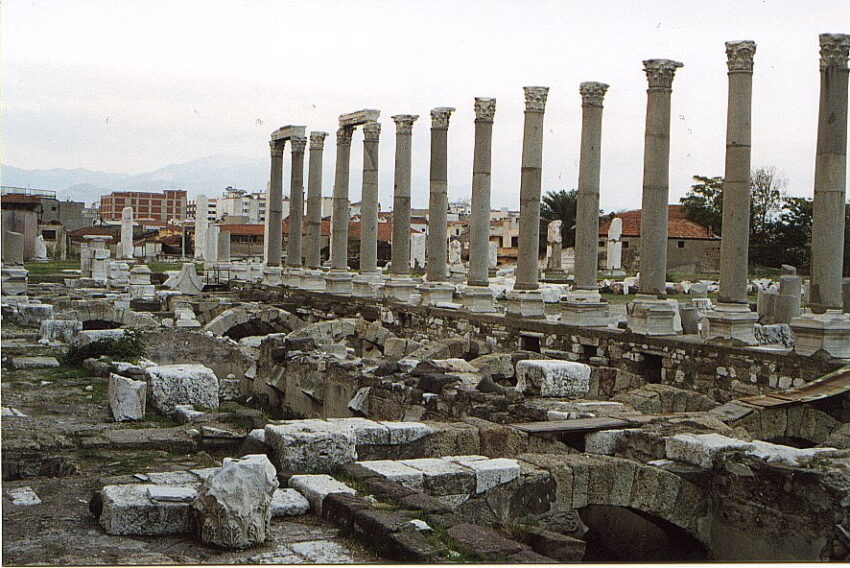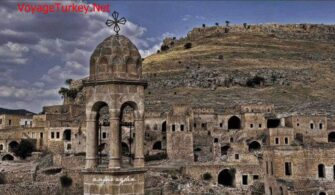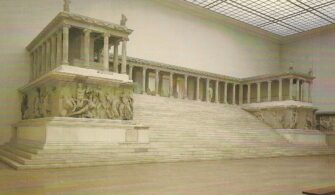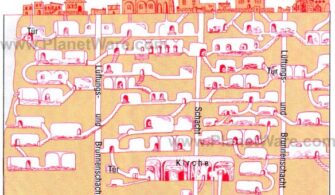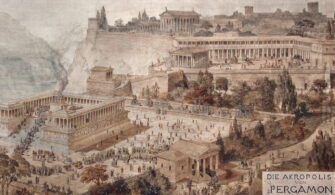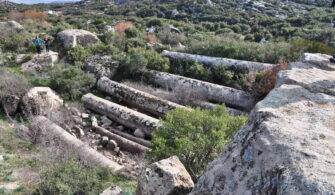The ancient city of Smyrna, known as one of the prominent cities of antiquity, offers a fascinating journey through time, shedding light on Turkey’s rich historical tapestry. Located in modern-day İzmir, Smyrna holds significance not only for its historical importance but also for its cultural and geographical significance.
Is Smyrna Greek or Turkish?
Smyrna’s history spans several millennia, during which it has been inhabited and influenced by various civilizations. Originally an Ionian city-state in ancient Greece, Smyrna later came under the control of different powers, including the Persians, Romans, Byzantines, and Ottomans. Thus, Smyrna has both Greek and Turkish historical connections, reflecting its complex and diverse heritage.
Where is the Ancient City of Smyrna?
The ancient city of Smyrna was situated on the Aegean coast of Anatolia, in what is now modern-day İzmir, Turkey. Its strategic location made it a vital center for trade and commerce, connecting the Aegean region with the rest of Anatolia and beyond.
History of Smyrna Ancient City
According to the geographer Strabon, Smyrna was the most beautiful Ionian city in ancient times. It is believed that Smyrna (present-day Bayraklı), “the country of the sacred mother”, was established in the third millennium B.C. by the Amazons, the legendary female warriors. According to another tale, it was established by the Lelegs. It existed even before the arrival of the Hittites.
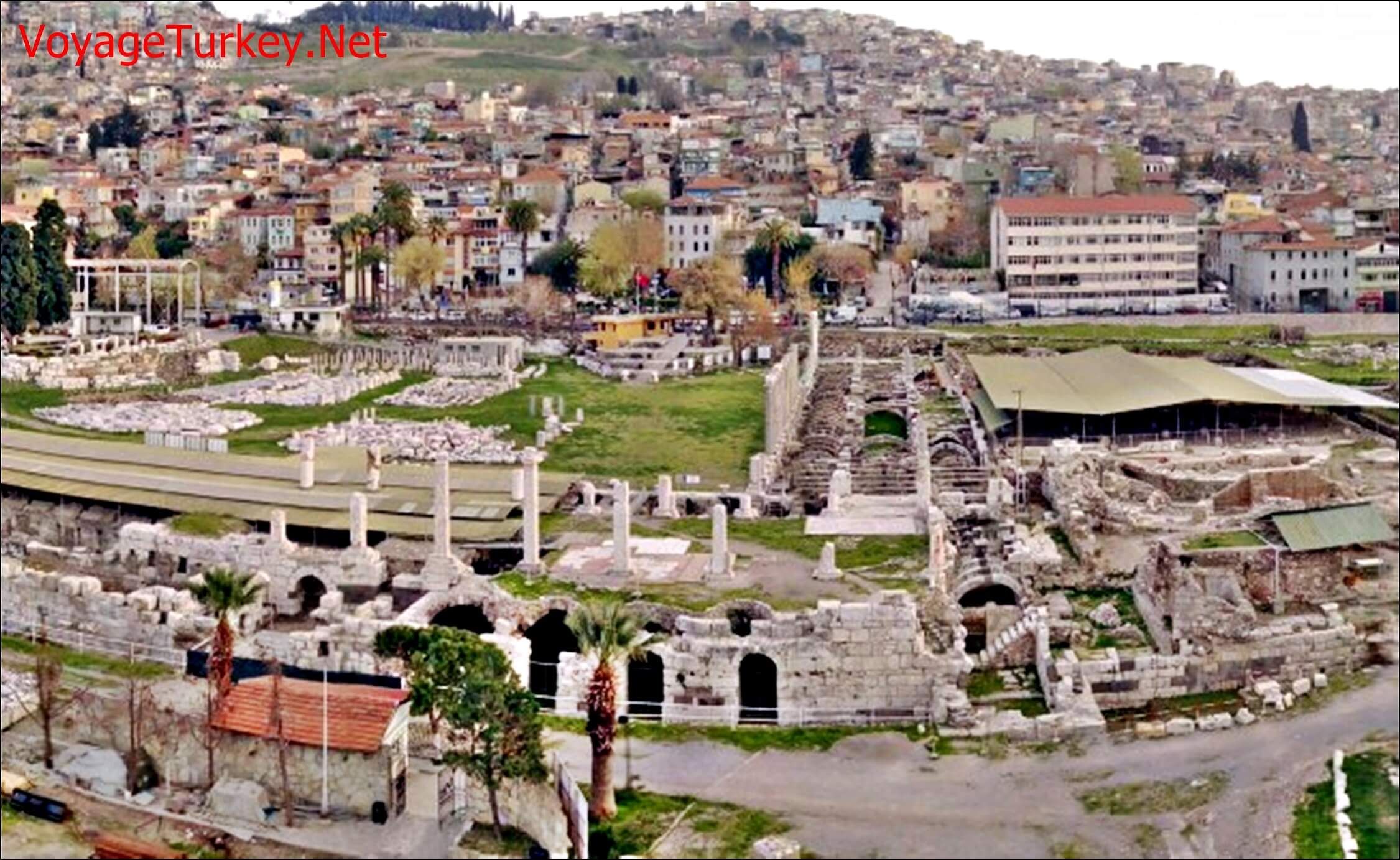
But, as a result of the excavations carried out by the Archaeological Department of Aegean University, the history of Smyrna was re-written. Artifacts were unearthed at excavations (such as arrows made from flintstone, small statues of animals, reliefs, and spoons made of fired earth) are dating back to the Neolithic Period. These show us that Smyrna had been a continuous settlement for 8500 years.
Smyrna had fallen under the influence of the Hittite Empire by 1500 B.C.
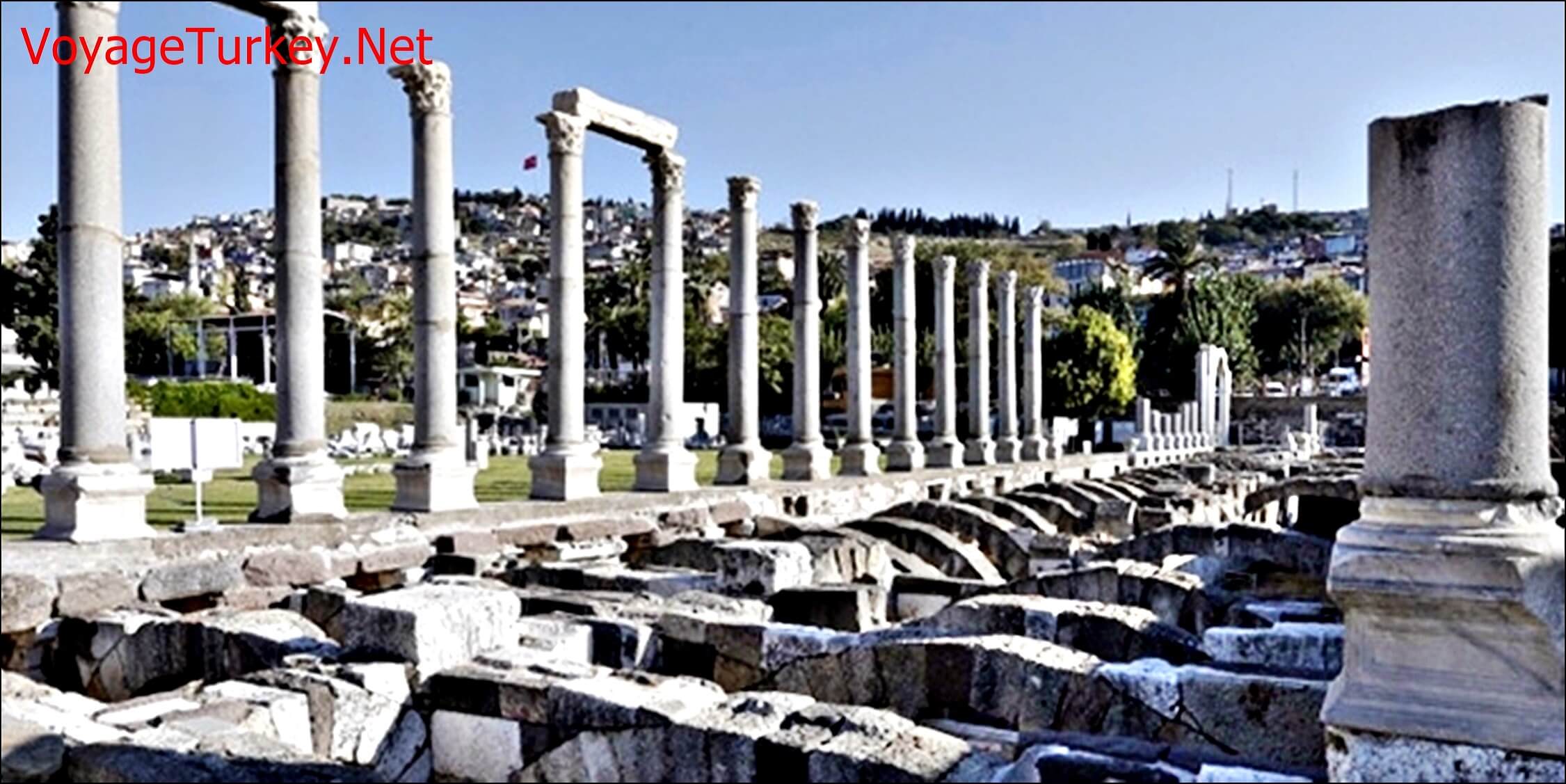
It was the most important city of the Ionian Federation, during the first millennium B.C. It is believed that Homer the Poet resided here and Smyrna was Homer’s inspiration.
Around 600 B.C. Lydian’s conquest of the city ended the Ionian ruling and the importance of Smyrna. It remained little more than a village throughout the Lydian.
In the fourth century B.C., during the reign of Alexander the Great, a new city was built on the slopes of Mt. Pagos. Legend has it that Alexander the Great had a dream about a goddess Nemesis and (according to the legend) Nemesis ordered him to re-build the City of Smyrna.
After the death of Alexander the Great, Smyrna was ruled by the Roman and the Byzantine Empires.
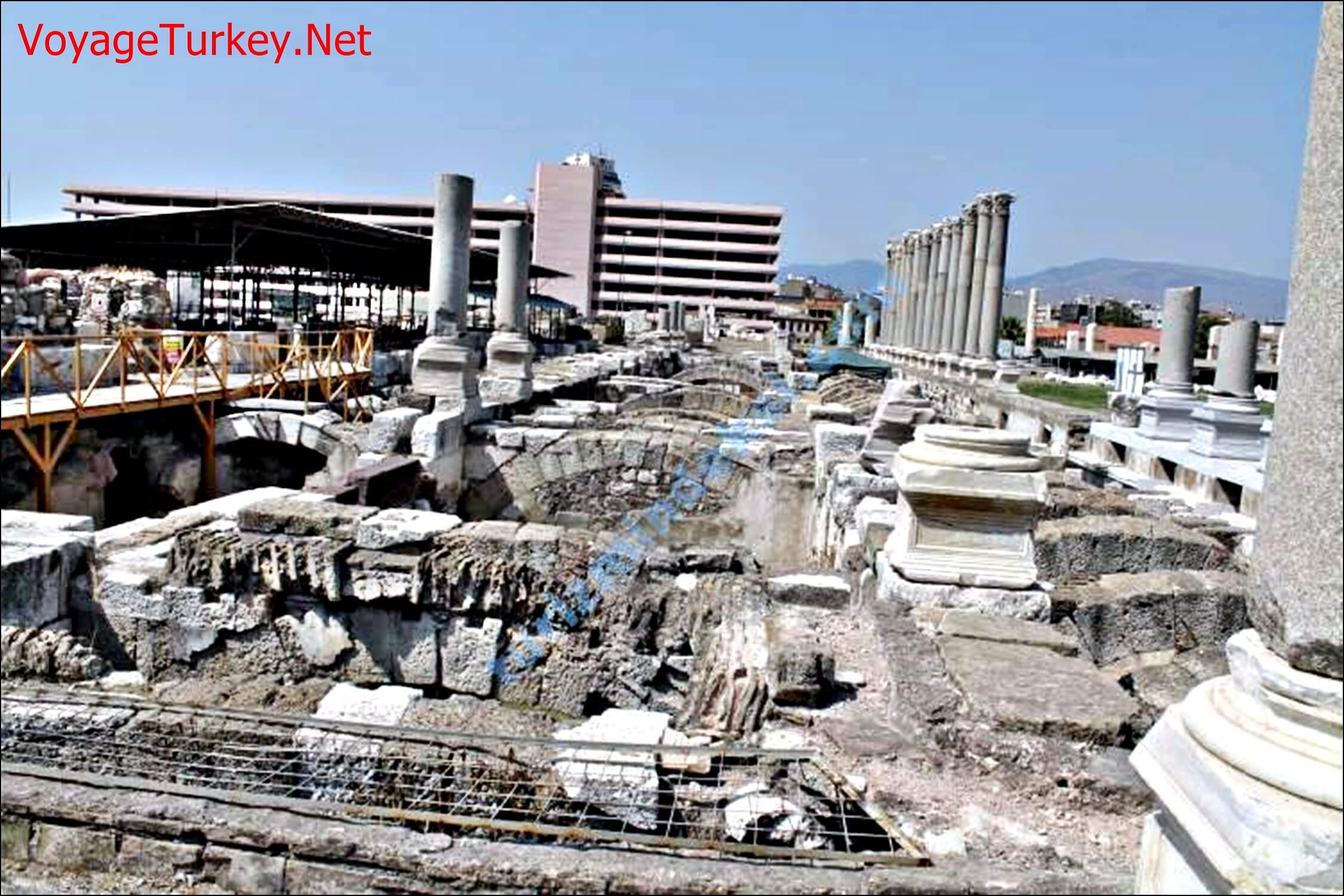
Later, Smyrna was captured by the Turks in the 14th century and was ruled by Emir Çaka Bey, Aydınoğlu Umur Bey, and the Seljuks and Ottoman Empire
Location of Smyrna Ancient City
The city is located on the Aegean Coast of Izmir.
City Map of Smyrna Ancient City
As can be seen from the following, it is unlikely to perceive the Smyrna city plan as a whole, since a large part of the ancient city of Smyrna is now used as a settlement….
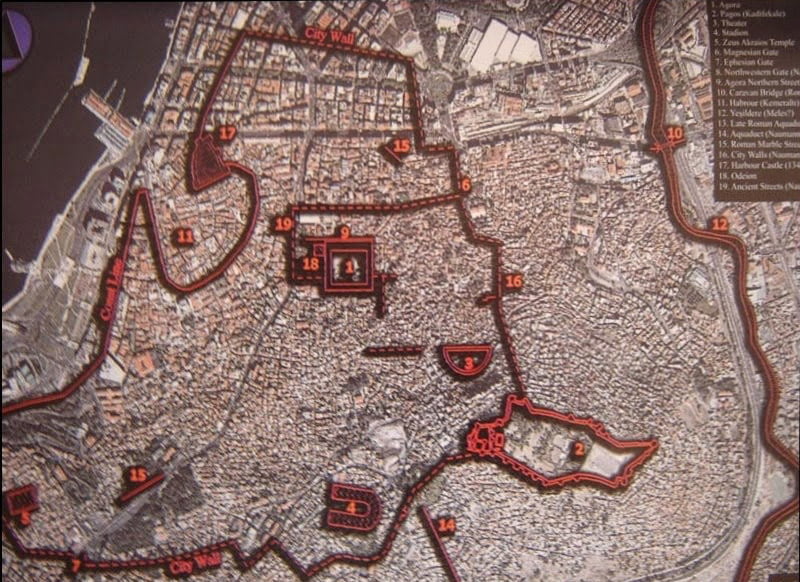
Buildings of The Smyrna Ancient City
Although there are many buildings and monuments in the original city, only the agora and basilica are evident today. Even a large part of the amphitheater building has been destroyed.
Agora
Agora (etymologically “city square” or trade center) had great commercial functions besides its political, religious, and judicial functions.
In ancient times, each city usually had at least one agora but in some big cities, there were two agoras. One of them is the state agora, where state affairs are seen. There were various public buildings around the state agora. Another agora is the commercial agora, where the commercial activities are concentrated.
The Smyrna agora, which was built during the Hellenistic era, is located on the northern slope of Mt. Pagos. There are important public buildings of the period around the agora. After the destructive 178 AD earthquake in this region, Smyrna agora totally rebuilt.
Basilica of Agora
The Roman period basilicas, which pioneered Christian churches in terms of plan features, are a kind of courthouse in which the city’s legal works are seen. On the other hand, basilicas were preferred for the activities of the merchants and bankers who direct the commercial life of the city.
The basilica on the north wing of the agora has a rectangular plan measuring 165 x 28 m from the outside. According to their dimensions, the basilica of Smyrna agora is the largest known Roman basilica.
What country is Smyrna today?
This ancient city is today within modern-day Izmir’s boundaries, a city that has almost continuously been inhabited for centuries. Old Smyrna was located on a small peninsula connected to the mainland by a narrow isthmus at the northeastern corner of the inner Gulf of İzmir.
Why was Smyrna Changed to İzmir?
The name change from Smyrna to İzmir reflects Turkey’s transition from the Ottoman Empire to the modern Republic of Turkey under the leadership of Mustafa Kemal Atatürk. As part of a broader initiative to modernize and secularize Turkish society, Atatürk implemented various reforms, including the adoption of a Latin-based alphabet and the renaming of cities to reflect their Turkish heritage. Thus, Smyrna was officially renamed İzmir in 1930, symbolizing Turkey’s embrace of its Turkish identity and modernization efforts.
In conclusion, the ancient city of Smyrna stands as a testament to Turkey’s rich and diverse history, bridging the gap between the past and the present. Through its archaeological remains and historical significance, Smyrna continues to captivate and inspire visitors, offering a glimpse into the enduring legacy of Anatolia’s ancient civilizations.
Why was Smyrna Important to Turkey?
Throughout its history, Smyrna played a crucial role in the economic, political, and cultural life of the region. As a bustling port city, it facilitated trade between the Mediterranean world and the Near East, contributing to the prosperity of the region. Additionally, Smyrna was a center of learning and culture, boasting renowned schools and philosophers.
In modern times, Smyrna, renamed İzmir after the establishment of the Republic of Turkey in 1923, continued to be a significant hub of economic activity and cultural exchange. Its port remains one of Turkey’s busiest, facilitating trade and transportation, while its vibrant cultural scene attracts visitors from around the world.
Where does the name Smyrna come from?
Greek name Smyrna and “Smyrne”, which was rendered as İzmir into Turkish, was used forms like Smire, Zmirra, Esmira, Ismira by Westerners. The name Smyrna may also have been taken from the ancient Greek word for myrrh, smýrna..
